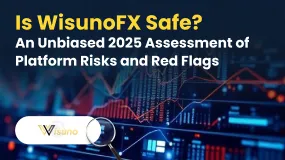Abstract:The South African Rand has had a bit of trouble finding stability lately, ZAR fell from dizzy heights to its lowest comparison against the dollar in a six month period, this recent whipsaw price action comes in recent weeks and on the back of some weak Chinese economic data, extensions in power cuts across South Africa, as well as our Russian alliance’s war against the Ukraine, negative and relentless unemployment reports and inflation that sees consumers pinching every penny amid this crisis, here we touch on a few of the many issues stifling the economic growth in South Africa.

Weak Chinese Data Impact on South Africa
To fully understand how the Chinese data impacts the economy, we must first understand why, as many investors know, China is one of South Africa‘s largest trade partners in the BRICS union and the world, as such, any decrease in imports and exports to and from China has a huge negative impact on South African revenue, less money spent on South African exports saw South Africa take the biggest hit from the less than impressive Chinese data, China also holds the title for being South Africa’s main source of imports as well, although the country has recovered some of its losses since the Chinese press release, global investor sentiment still remains cautious towards South Africa, prompting a risk off stance from investors and priming South African assets for more downside.
China‘s retail data, posting an 11 percent reduction in retails sales over a 12 month period, industrial production dropped by 2.9 percent while unemployment rise to 6.7 percent, the highest since 2018, giving the impression that the Chinese-South African trade deficit won’t be filled anytime soon, Soaring COVID-19 cases prompted the Chinese government to impose stricter restrictions in an effort to continue its Covid zero policy which brought about the subsequent reduction in production.
As a side note, US Dollar strength has also contributed to ZAR weakness with the dollar printing two year highs in recent days.
Extended Power Cuts
The countries power supplier, Eskom, has also announced and again implemented stage 4 power cuts with prospects of increasing the power cuts to stage 8 load shedding, meaning the country will face blackouts 3 times daily for 2 to 4 hours at a time. The reimplementation of stage 4 load shedding added to investor fears and as a result continued to drive the Rand down further toward the 16.30 level against the dollar at time of writing, with many traders citing the Rand as the currency to short, although South Africa has not imposed stricter restrictions it is now safe to say that the country has entered its fifth wave of COVID-19 cases which still rages on in the country and the globe as a whole. With power outages diminishing production output and manufacturing as well as fears of yet another wave of the virus are weighing heavily on economic growth and adding to sentiment that Rand weakness is still a reality in the coming financial quarter.

Russia-Ukraine War
The Russian invasion of the Ukraine is just one more piece of the disastrous puzzle for the South African economy, with commodity prices rising due to lack of supply from Russia to South Africa, petroleum price hikes pushing the cost of feul to heights never seen or imagined before, this has had a knock on effect on consumer spend and only just adds to fears of a national recession, consumers are prioritizing their resources toward the bare and basic necessities and now the retail sector has begun to feel the pinch of decreased consumer spend. Russian agricultural exports have also become an issue, not only to South Africa but to the continent as a whole, with all the sanctions that were imposed on the Kremlin food imports have trickled down to a drip creating more panic about a food supply chain crisis in South Africa, but this was quickly debunked due to South Africa being independent on agricultural goods, South Africa has also stepped up to the plate and declared that the country will assist any neighboring countries in filling the agricultural gap left by the war, meanwhile, the war continues to rage on in the Ukraine where Russia once again laid waste to major Ukraine cities and villages on Friday the 19th May, peace talks seem nonexistent and with no sign of relent from President Putin there seems this war is not ending anytime soon.
Interest Rate Hike
A sigh of relief was felt by the Rand when it pulled back a few recent losses on the flip side of the interest rate decision, the decision saw the Rand strengthen against the US Dollar to around the 15.71 handle, but the questions begs… will it be enough to turn the tide? A higher interest rate translates to people forking out more on assets linked to the prime rate and will likely see people tightening up on non essential spending and ultimately hold on to any additional income, so the South African economy is now faced with a double edge sword, and although the Rand is back on top in emerging markets, there seems to be a lot more working against economic growth then there is working with it.
Conclusion
Africa‘s most advanced economy seems to be taking quite a bit of financial strain, without any tangible signs of dramatic change anytime soon. From reduced foreign trade to load shedding, uncontrollable unemployment as well as horrific floods that are still raging on in one of the country’s economic hubs and ports of entry and a tourism industry that is limping along, financial relief seems a bit unlikely in the near future, but nothing is impossible and it will be rather interesting to see any decent economic recovery over the next quarter.











